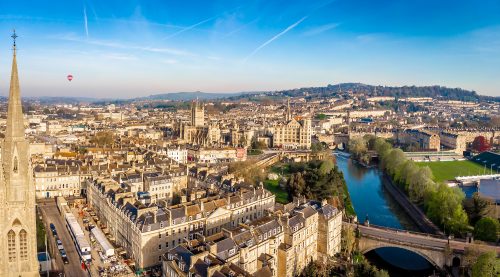
In the City of Bath World Heritage Site new taller than average buildings require sensitive care in their siting, setting, context, design and cumulative impact.
Excellence in the design of any new tall buildings in Bath must be low carbon and exceptional and engage the public in a positive way. Building heights should seek to strike an appropriate balance between maximising housing delivery and safeguarding heritage landscapes.
Tall buildings in Bath are the exception not the norm. The uniform height of buildings across the Avon River valley emphasises the way in which the Georgian City punctuated by occasional church spires and towers, hugs the contours of the hills and attaches the built environment to its landscape.
Bath’s Outstanding Universal Value (OUV) as a World Heritage Site is partly characterised by this visual homogeneity. The height, position, and form of Bath’s historic crescents and terraces was carefully designed to reveal dramatic views.
BPT maintains that the building heights of new development should be informed by the site’s immediate neighbourhood, and respect important views and vistas as well as the hillside setting, landscape views, and open space.

